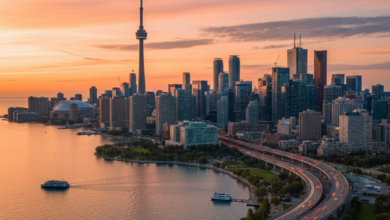
How Plants Help Me Find Time for the Much-Needed Self-Care
Plants are a notification from nature to look after ourselves. The mind of a person is influenced by many things. In addition to adding beauty, research reveals that indoor plants have many things to do on a person’s mind. And in this article, we’ll be looking into the active and passive works of plants in your life and some plants that can opt to flourish and grow in LED lights.
Table of Contents
Impacts of houseplants
Earlier, pets were recommended to be raised by mental-ill patients to make them feel better. Nowadays, plants play the same role. Studies show that house gardening reduces stress, relaxes the mood, and creates a pleasant environment for an individual.
Home plants don’t just look good, they make us feel good.
It improves the
- Concentration, creativity
- Stress level maintained
- A clean environment is provided by filtering the pollution
- Has become therapeutic in treatments.
Researchers prove that a walk with nature outside reduces mental problems, increases and improves cognition.
How Plants makes us feel happier
It’s amazing to know how a negative mood is changed into a good one, that a walk in the park can do. It’s because nature helps in our well-being.
Although indoor plants are not equal to outdoor ones, indoor plants act as a rescue for people who spend 90% indoors and provide similar benefits just like outdoor plants.
Not only at home, but plants have also proved their presence to be soothing even in workplaces. The studies conducted by the U.S. The Environmental Protection Agency revealed that the presence of plants in workplaces enhanced the work experience of employees; absence due to sickness has also reduced gradually.
The connection between nature and human beings starts from the DNA. In a book called Biophilia, Edward O. Wilson, a biologist, mentioned that every human being possesses the inborn tendency to connect with nature somehow.
Plants’ impact on the environment
Plants not only beautify your home but also improve invisible goodness like air quality. Plants like Ferns and palms add beauty to the house, and plants like cacti and Tulsi give a feel of freshness and soul awakening.
Indoor air quality can be improved in a few ways, such as photosynthesis, a process by which the toxic carbon dioxide around us is absorbed, and the beneficial oxygen is given out to us by the plants. Indoor plants increase humidity and moisture level by transpiration, respiration.
Pollutant gases are not only present in outdoor cities, but also the indoor. NASA’s Clean Air Study proves that house plants and their beneficial microorganisms remove toxic gases and inorganic and organic volatile substances.
LED Lights Role In House Plants
Few plants I can adapt to the indoor environment and indoor light. However, this does not apply to all the plants. Some plants require full sunlight for their growth. The indoor environment such as a dark house, wintertime can affect the growth of full-time sunlight-required plants.
LED lights offer a boost for plant growth. Under regular LED lights the plant can survive. However, plants grow well under LED grow lights. LED grow lights actively provide photosynthetic radiation, thereby, LED grow lights provide a better photosynthetic environment to the indoor plants.
The advantage of LED grows lights is that they emit less heat and energy consumption is lower. The blue and red light combinations in the LED grow lights have a better growth rate in plants. The designated Blue rays in LED grow lights activate a chlorophyll pigment and improve the photosynthetic reaction, the red light helps in the blooming of flowers.
How Plants help me in self-care!
Taking care of plants very often reminds me to care for myself. Firstly the inner pieces are obtained when a green atmosphere surrounds us. A pleasant feel is obtained when a new foliage leaf is sprayed with liquid fertilizer. It reminds me how sensitive it is to instantly care for someone.
Watering the plants reminds me to hydrate myself. Since I started to surround myself with a greenery environment, my mental health gradually developed in many ways such as memory, coping with loneliness, attentiveness, etc. Moreover, the amazing thing is that green plants lessen the psychological and physiological stress caused by our day-to-day life and make me feel less alone.
Conclusion
In a nutshell, indoor plants are one of the nicest remedies to look after oneself in this busy world. Everyday workout and exercise are not compulsory, and sometimes just a little nourishment, water, and a green atmosphere are all needed for a healthy mindset. Not only do pets assist us to feel nice, but plants too!








